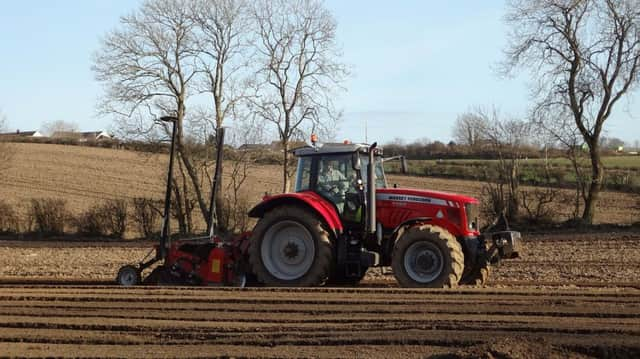DARD MANAGEMENT NOTES: Crops


If not supplied by the first application, aim to include sulphur at a total rate of 25-40 kg per hectare of SO3 for all cereals. Where applied, organic manures may have supplied some of this requirement and should be taken into account. Inspect crops for recently emerged broad leaved weeds and apply top-up herbicide to any problem or late germinating weeds as soon as conditions allow. To avoid unnecessary crop damage adhere to product labels, paying particular attention to latest application timings, sequences with other herbicides and safe tank mixes with other products.
Disease control
In winter barley, especially where no T0 fungicide has been applied or T1 is yet to be applied, fungicide rates need to be kept high to help get on top of any infection in the crop. Following T1 fungicides, the next main spray is the T2 which should be applied around growth stage 39 when the flag leaf has fully emerged and the first few awns are appearing. It is very important to ensure the gap between T1 and T2 fungicide applications does not exceed four weeks. Fungicide options are similar to T1 sprays and again rates will depend on disease levels at the time of spraying.
Advertisement
Hide AdAdvertisement
Hide AdFor winter wheat some crops will have received T0 sprays by now. Where this has not yet been applied the T1 will be critical to get on top of Septoria and should be applied around growth stage 32 or ideally leaf three emerging. For the T1 use robust rates of Triazole, for example Ignite or Proline mixed with an SDHI and multisite protectant. Links to HGCA fungicide decision support charts can be found on the crops page of the DARD internet site (www.dardni.gov.uk) along with growth stage charts to help plan your programmes.
Spring barley
Sowing should take place as soon as a good seedbed can be created. The chosen seed rate, calculated from the thousand-grain weight, should lie between 350 and 400 grains per square metre.
Plan also to treat weeds in emerging crops as soon as possible. Earlier treatment allows the use of a wider range of products helping manage resistant broad leaved weeds and also target annual meadow grass.
POTATOES
Sprouting and chitting: Pre-sprouting systems (bag or tray) must provide adequate temperature, ventilation and light to control sprout growth and protect against frost. Seed planted now will be for the main crop so ensure the pre-sprouting system encourages multiple sprouting to produce many tubers which can increase in size over a longer growing season than with early varieties.
Mini-chitting
Advertisement
Hide AdAdvertisement
Hide AdThis system of seed preparation aims to produce seed tubers with sprouts no more than 2 mm long. Seed is stored at 3-4 oC until seven to 10 days pre-planting when the refrigeration unit is turned off allowing chitting to occur. Plant seed once 1-2 mm sprouts have formed. If planting is delayed re-cool seed to 3-4oC preventing further sprout growth. Although later harvested than pre-sprouted seed, mini-chitting produces a crop that emerges quickly and evenly.
Greening and EFA requirements
In 2016 some growers will again have to meet greening regulations. Crop diversification remains the same as 2015, the two and three crop rules still apply.
If you still have an Ecological Focus Area (EFA) requirement you must ensure that an area equivalent to at least 5% of arable land is used as an EFA. This is the same percentage as in 2015. The big change from last year is that the EFA declaration must be submitted online in 2016, the new system will be available from early April.
Greening represents approximately 30% of your entitlement value so it is worth taking time to make sure you have made allowance to cope with it.